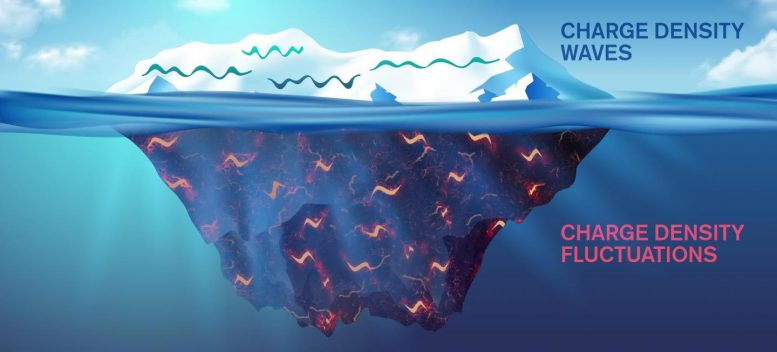
Charge density waves are just the tip of the iceberg of the charge modulation phenomenon: charge density fluctuations are much more pervasive, and may be crucial to unlocking the secrets of high temperature superconductors. Credit: Yen Strandqvist/Chalmers University of Technology
Researchers from Chalmers University of Technology and Politecnico di Milano have identified a crucial new aspect of charge density modulations in cuprate high critical temperature superconductors. They have identified a new electron wave which could help reveal some of the mysteries about superconducting materials. The findings are published in the journal Science.
High critical temperature superconductors have a variable charge density, meaning that their electrical charge is unevenly distributed. This partly results from what are known as ‘charge density waves’, which were discovered a few years ago. But these have only been observed to exist sporadically, under certain conditions. Therefore, they were not believed to be a contributing factor to the materials’ superconducting properties.
What the researchers have now discovered, however, is an additional aspect to the variable charge density, which they term “charge density fluctuations”. These have been identified as an additional charge modulation, collective and with a shorter correlation length. They are very pervasive, meaning that compared to the conventional charge density waves, they are present at a much greater range of temperatures, up to room temperature and beyond, and at different levels of oxygen doping.
“These charge density fluctuations could be a crucial ingredient of the highly unconventional room temperature properties of high critical temperature superconductors – something which challenges our common understanding of the charge transport in metals,” says Riccardo Arpaia, a postdoctoral researcher at the Department of Microtechnology and Nanoscience at Chalmers, who carried out the research.

Riccardo Arpaia, postdoctoral researcher at the Department of Microtechnology and Nanoscience at Chalmers. Credit: Johan Bodell/Chalmers University of Technology
“One could say the charge density waves, which were already very well known, were just the tip of the iceberg. The charge density fluctuations which we have now identified are like the hidden bulk of the iceberg.” says Riccardo Arpaia. “The discoveries were possible thanks to the major developments of synchrotron-based x-ray scattering techniques, and to the quality of the samples we have used.”
The samples were fabricated at the Italian National Research Council in Napoli, and in the research group at Chalmers led by Professor Floriana Lombardi.
A further finding of the paper looks at how the charge density fluctuations evolve with the temperature of the material. While the previously-known charge density waves change abruptly as soon as the critical temperature is reached – meaning, dependent on whether the material is in a superconductive state or not, the newly-discovered charge density fluctuations are unaffected by the superconductivity. This indicates that the two characteristics are not ‘in competition’ with one another. This finding might strengthen the researchers’ theory that the charge density fluctuations are the key to explaining the mystery of these materials.
Because superconductors operate at such low temperatures, they require cooling from liquid helium or liquid nitrogen, making them expensive and difficult to use outside of certain commercial applications. But if a superconductor could be made to work closer to room temperature, it could have enormous potential. Therefore, there is a lot of interest in improving our understanding of how this class of superconductors works.
Giacomo Ghiringhelli, Professor of Physics at Politecnico di Milano says about the research: “Since 2012, when charge density waves in cuprates were first observed, their importance had not been disputed – but their role had remained unclear. The newly observed charge density fluctuations appear to be a very general property of these materials, meaning they are likely playing a crucial role in the transport of electric current in cuprates.”
Read the article “Dynamical charge density fluctuations pervading the phase diagram of a Cu-based high-Tc superconductor” in the journal Science.
More information about superconductors
Superconductors are materials which, when exposed to a certain temperature, known as the ‘critical temperature’, suddenly acquire incredible new properties – chiefly, that they can conduct electrical charge with zero resistance.
Most superconductors currently in commercial use are known as low critical temperature – typically meaning below about -240 degrees Celsius. High critical temperature superconductors meanwhile, are those which exhibit superconducting properties at a somewhat higher temperature – though still hundreds of degrees below zero. The most common type are known as ‘cuprates’, made from a mixture of copper and oxygen – it was this particular class of superconductors which the researchers investigated.
European collaboration for the research
Riccardo Arpaia, co-lead author of the paper, is a researcher from Chalmers University of Technology who, through the framework of the Swedish Research Council’s international postdoc programme, also researches at Politecnico di Milano, in the group of Giacomo Ghiringhelli, who conceived the experiment.
Chalmers and Politecnico di Milano are both members of the IDEA league, an alliance of five leading European technological universities, that aims to encourage and elevate European research in science and technology by sharing academic resources and knowledge.
Experiments were performed at the European Synchrotron Radiation Facility in Grenoble, in collaboration with researchers of the Italian National Research Council (CNR) and of the Sapienza University of Rome.
Resonant inelastic X-ray scattering
The researchers identified the charge density fluctuations through the use of a technique known as resonant inelastic X-ray scattering. RIXS is a spectroscopy technique, where photons (X-ray radiation) get scattered from a material due to interaction with electronic clouds.
RIXS is, as suggested by the name, a resonant technique, since the energy of the incident photons coincides, and hence resonates, with a specific electronic transition (the Cu L3 edge at ≃931 eV, in the case illustrated in the paper). This strongly enhances the signal. For this reason, RIXS currently represents the best technique for the detection of weak charge density modulations with particularly short correlation lengths, going even beyond previous limits set by neutron scattering and scanning tunnel microscopy techniques.
The exceptional results presented in this work were made possible by the innovative “ERIXS” instrument realized jointly by the ESRF and the Politecnico di Milano.
Reference: “Dynamical charge density fluctuations pervading the phase diagram of a Cu-based high-Tc superconductor” by R. Arpaia1, S. Caprara, R. Fumagalli, G. De Vecchi, Y. Y. Peng, E. Andersson, D. Betto, G. M. De Luca, N. B. Brookes, F. Lombardi, M. Salluzzo, L. Braicovich, C. Di Castro, M. Grilli and G. Ghiringhelli, 30 August 2019, Science.
DOI: 10.1126/science.aav1315

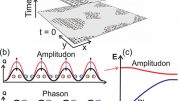
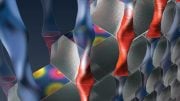
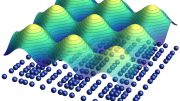
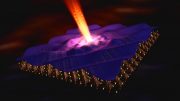
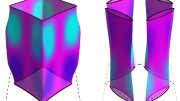

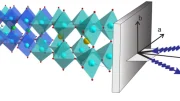

Be the first to comment on "Crucial New Aspect of Charge Density Modulations in High Temperature Superconductors Uncovered"